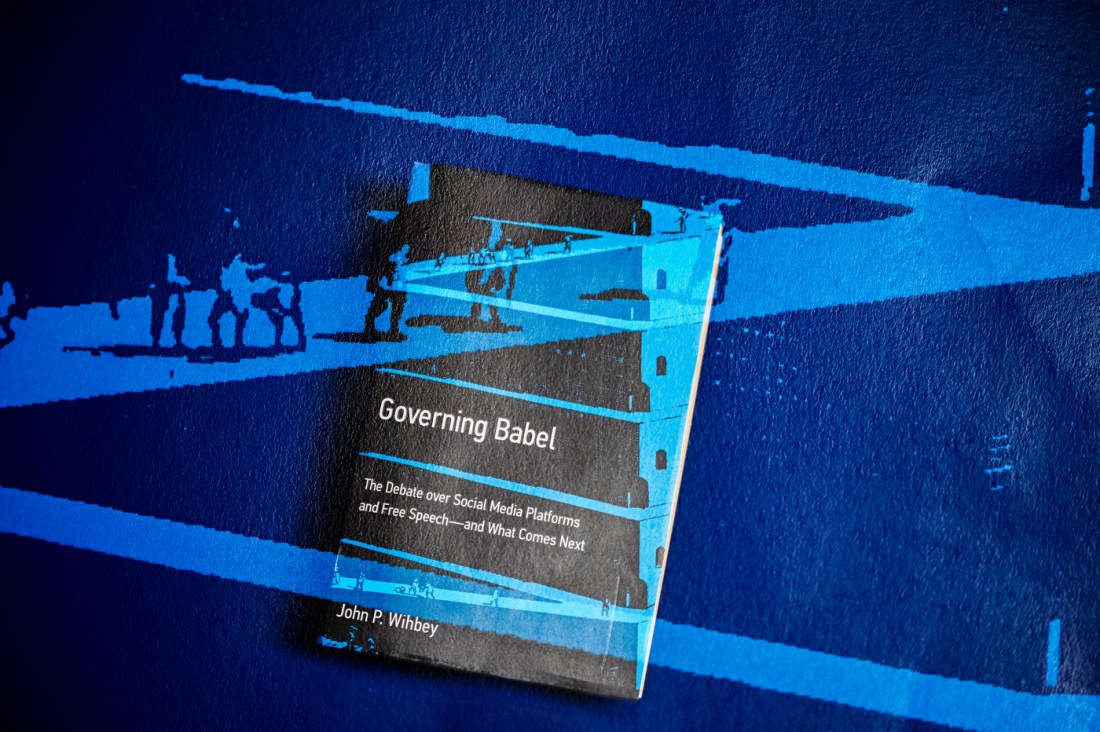How can the U.S. regulate social media? This expert has some ideas
In “Governing Babel,” John Wihbey explores how the U.S., largely a non-player in regulating social media, can start to address one of the most pressing issues of our time.

In the aftermath of conservative activist Charlie Kirk’s shooting, social media platforms were flooded with graphic footage of his death. The ease with which these platforms algorithmically served up videos of a man’s death and left them online sparked another debate around one of the 21st century’s most pressing problems: How do you regulate social media?
In his latest book, “Governing Babel,” John Wihbey, an associate professor of journalism at Northeastern University and co-founder of the Internet Democracy Initiative, is consumed with the same question. And he has some ideas.
Wihbey’s aim is “to come up with what would be a minimum viable approach for the United States, which basically is sitting on the sidelines right now while the rest of the world is coming up with digital regulations,” he explains.
“We’re effectively a non-player in the policy and regulation space right now on this all-important issue,” Wihbey says.
Wihbey doesn’t lay out a specific set of rules and regulations that the U.S. should follow. However, he does examine the history of communications technology regulation in the U.S. to contextualize and recommend a few ideas for how America can get itself in a position to lead on this issue.
For starters, Wihbey emphasizes the need for a new regulatory body or agency, “a successor to the FCC [Federal Communications Commission],” equipped to adapt to the digital future.
“It may not look like a regular commission,” Wihbey says. “It may look more like a citizen’s assembly, it may look more like a jury. I think it would probably employ AI tools.”
The goal, at its most basic, would be for this agency to get social media companies to start “filling out some paperwork and providing some data,” he continues.
Editor’s Picks
“My vision is instead of calling up the CEOs to Capitol Hill every so often and yelling at them and grandstanding, you bring it down to a more detailed level in an agency setting and have a regular set of audits and hearings,” Wihbey says. “You would build a conversation over the first few years before you really start rule making. I don’t think our society is anywhere close to coming up with the silver bullet set of rules.”
One of the unique challenges the U.S. faces in regulating social media is having to walk a tightrope between what’s protected under the First Amendment and what is considered responsible stewardship on the part of social media companies.
The European Union’s sweeping Digital Service Act, which is designed to protect users from certain content, whether it’s targeted ads for minors or illegal content, would likely violate the First Amendment, Wihbey points out. The other major regulatory model, China’s state-based cybersovereignty approach, infringes on free speech in other ways.
America’s libertarian model of regulating online platforms comes out of Section 230 of the Communications Decency Act of 1996. It generally provides immunity to online platform holders for the content published by users on those platforms. It also broadly protects those platforms from the consequences of taking down certain content.
Wihbey says it is the fundamental principle that has governed how the U.S. approaches regulating digital platforms, but it’s dated. In the age of social media and AI, “it makes it very difficult for us to imagine what actually could be done to keep things fairly in line,” he says. It’s why Wihbey sees the U.S. taking more of a “light touch” to regulation.
“I can’t imagine a regulation that would require people to take down specific instances of speech and expression and content, which will not satisfy a lot of critics,” Wihbey says. “But what I can imagine is we would judge companies on general patterns of either neglect or care and that we could, through a deliberative process and maybe a few carrots and sticks, start to get them better into line.”










